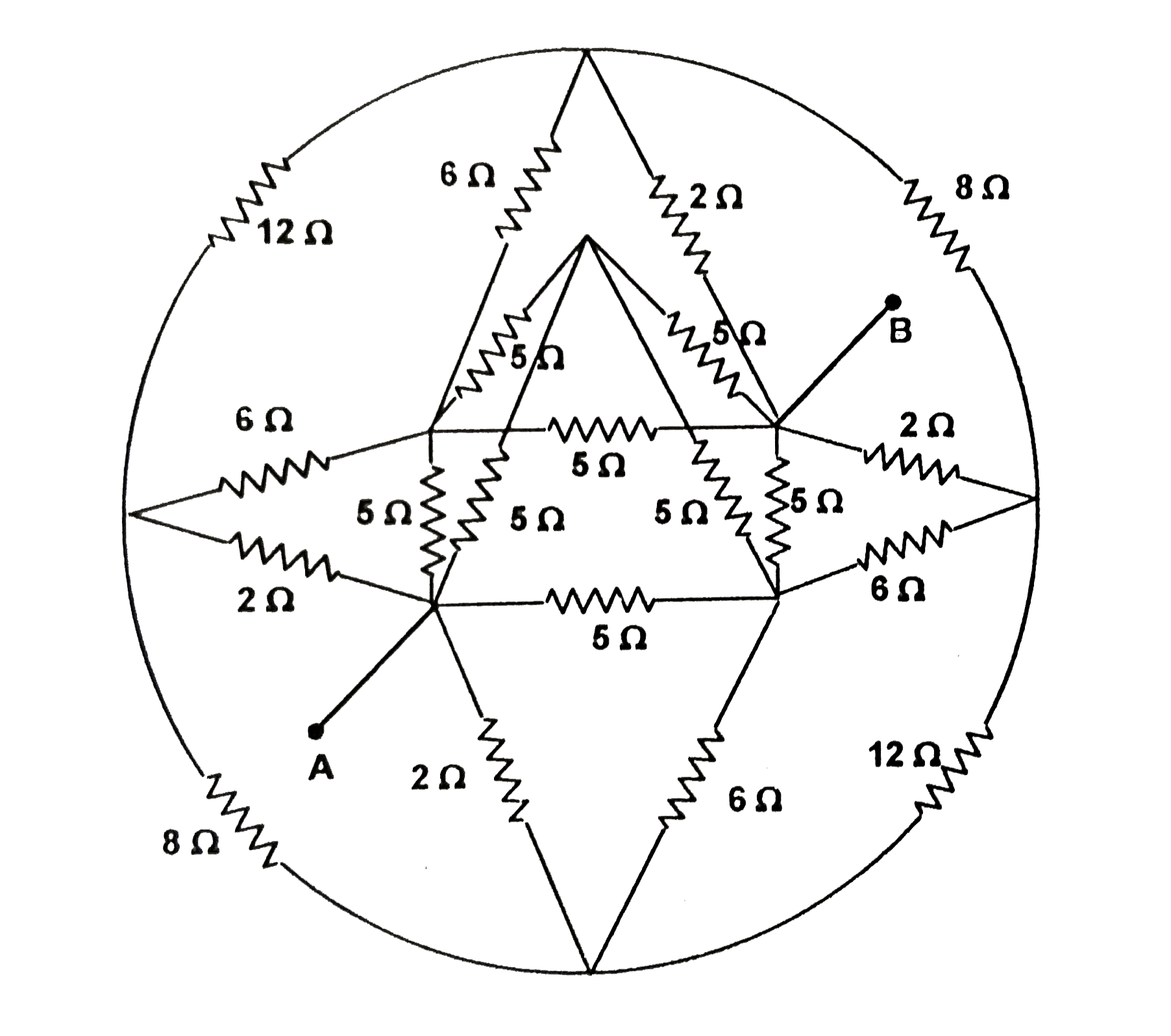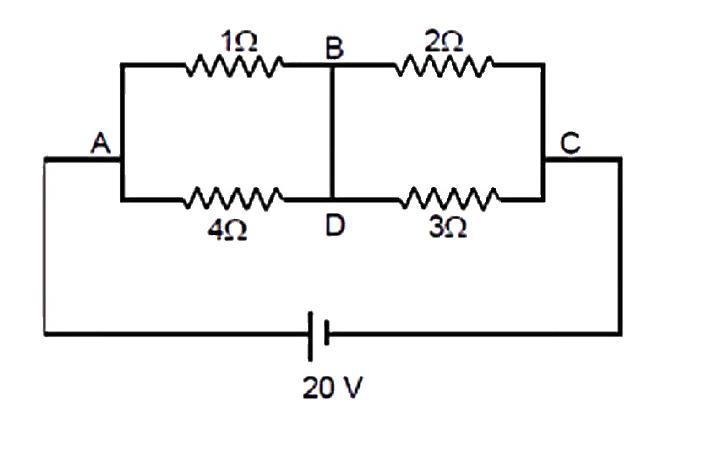Statement I: Heater wire must have high resistance than connecting wires and high netallic point.
Statement II : If resistance is high , the electrical conductivity will be less.
Statement I is True , Statement II is True , Statement II is a correct explanation for Statement I.
Statement I is True, Statement II is True , Statement II is NOT a correct explanation for statement I.
Statement I is True , Statement is False.
Statement I is False, Statement II is True.
The correct Answer is:B
To analyze the statements provided in the question, we will break down the reasoning step by step.
Step 1: Understanding Statement I
Statement I: "Heater wire must have high resistance than connecting wires and high melting point."
- Analysis:
- The heater wire is designed to convert electrical energy into heat energy. For this to happen efficiently, it must have a higher resistance than the connecting wires. This is because, according to the formula for power (P = I²R or P = V²/R), if the resistance (R) is high, the power (P) dissipated as heat in the heater will also be high, assuming the current (I) remains constant.
- Additionally, the heater wire must have a high melting point to prevent it from melting due to the heat generated during operation. If the melting point is low, the wire could fail and stop functioning.
Conclusion for Statement I: This statement is correct.
Step 2: Understanding Statement II
Statement II: "If resistance is high, the electrical conductivity will be less."
- Analysis:
- Electrical resistance (R) and electrical conductivity (σ) are inversely related. The relationship can be expressed as:
R=ρLA
where ρ is resistivity, L is the length of the conductor, and A is the cross-sectional area.
- Conductivity (σ) is the reciprocal of resistivity:
σ=1ρ
- Therefore, if resistance is high, it implies that resistivity is high, which means conductivity must be low. This confirms that higher resistance corresponds to lower conductivity.
Conclusion for Statement II: This statement is also correct.
Step 3: Final Conclusion
- Both statements are correct, but they do not provide a direct explanation for each other. Thus, while both are true, Statement II does not serve as a correct explanation for Statement I.
Final Answer:
- Statement I is true.
- Statement II is true.
- Statement II is not the correct explanation for Statement I.
---
Statement I: "Heater wire must have high resistance than connecting wires and high melting point."
- The heater wire is designed to convert electrical energy into heat energy. For this to happen efficiently, it must have a higher resistance than the connecting wires. This is because, according to the formula for power (P = I²R or P = V²/R), if the resistance (R) is high, the power (P) dissipated as heat in the heater will also be high, assuming the current (I) remains constant.
- Additionally, the heater wire must have a high melting point to prevent it from melting due to the heat generated during operation. If the melting point is low, the wire could fail and stop functioning.
Statement II: "If resistance is high, the electrical conductivity will be less."
- Electrical resistance (R) and electrical conductivity (σ) are inversely related. The relationship can be expressed as:
R=ρLA
where ρ is resistivity, L is the length of the conductor, and A is the cross-sectional area.
- Conductivity (σ) is the reciprocal of resistivity:
σ=1ρ
- Therefore, if resistance is high, it implies that resistivity is high, which means conductivity must be low. This confirms that higher resistance corresponds to lower conductivity.
- Both statements are correct, but they do not provide a direct explanation for each other. Thus, while both are true, Statement II does not serve as a correct explanation for Statement I.
- Statement I is true.
- Statement II is true.
- Statement II is not the correct explanation for Statement I.
Topper's Solved these Questions
- HEATING EFFECT OF CURRENTBOOK - CENGAGE PHYSICS ENGLISHCHAPTER - HEATING EFFECT OF CURRENTEXERCISE - Comprehension
13 Videos
- HEATING EFFECT OF CURRENTBOOK - CENGAGE PHYSICS ENGLISHCHAPTER - HEATING EFFECT OF CURRENTEXERCISE - Integer
5 Videos
- HEATING EFFECT OF CURRENTBOOK - CENGAGE PHYSICS ENGLISHCHAPTER - HEATING EFFECT OF CURRENTEXERCISE - Multiple Correct
5 Videos
- GEOMETRICAL OPTICSBOOK - CENGAGE PHYSICS ENGLISHCHAPTER - GEOMETRICAL OPTICSEXERCISE - Integer Type
4 Videos
- INDUCTANCEBOOK - CENGAGE PHYSICS ENGLISHCHAPTER - INDUCTANCEEXERCISE - Concept Based
8 Videos
Similar Questions
Three wires each have resistance 2Ω, if we connect 2 in series with one parallel to the combination the equivalent resistance is
View SolutionAssertion: Fuse wire must have high resistance and low melting point.
Reason: Fuse is used for small current flow only.
View SolutionAssertion : In metre bridge experiment, a high resistance is always connected in series with a galvanometer.
Reason : As resistance increases, current through the circuit increases,
View SolutionAssertion : In metre bridge experiment, a high resistance is always connected in series with a galvanometer.
Reason : As resistance increases, current through the circuit increases,
View SolutionStatement-I: In practical application, power rating of resistance is not important.
Statement-II: Property of resistance remain same even at high temperature.
View SolutionStatement I : The wires supplying current to an electric heater are not heated appreciably.
Statement II: Resistance of connecting wires is very small and H∝R.
View SolutionDetermine the equivalent resistance between point A and B in Ω, considering that connecting wires have no resistance

View SolutionIn the given circuit diagram , a connecting wire of negligible resistance is joining the points B and D, the current in the connecting wire is

View SolutionA student performs meter bridge experiment to determine specific resistance of a conducting wire of length 10cm and diameter 1mm. When a standard 6Ω resistance is connected on left gap and the given conducting wire is connected on the right gap, the balance points obtained for 60cm length of the meter bridge wire. The specific resistance in Ω−m for material of the given wire is:
View SolutionStatement A: Ammeter is a low resistance galvanometer
Statement B: Voltmeter is a high resistance galvanometer
Read the above statements and chose the correct option given below
View Solution
